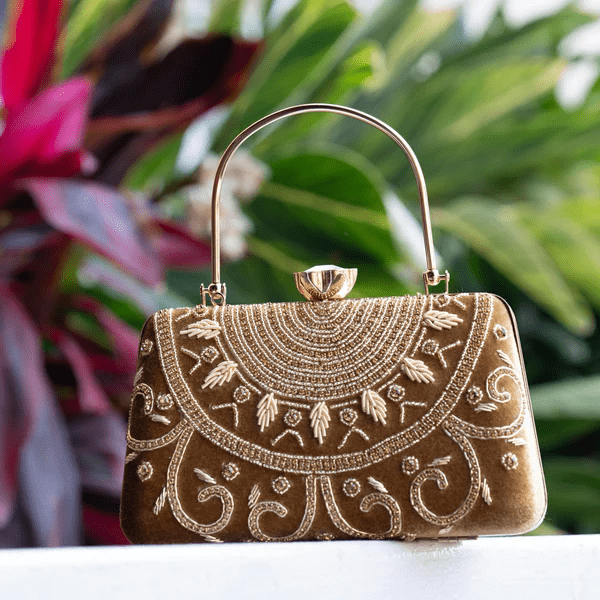More Than Just an Accessory: The History and Legacy Behind Luxury Bags
Luxury bags have long transcended their practical purpose, evolving into symbols of status, craftsmanship, and timeless elegance. These coveted items are more than mere accessories; they embody rich histories and legacies that have shaped the fashion industry. From their origins to their cultural impact, luxury bags have fascinating stories to tell. In The Craft Bazaar delves into the history and legacy of luxury bags, exploring the iconic brands and designs that continue to captivate the world.
The Origins of Luxury Bags
Early Beginnings
The concept of luxury bags dates back centuries. In ancient civilizations, bags were primarily functional items used to carry essentials. The Egyptians, Greeks, and Romans used various forms of pouches and bags, often adorned with intricate designs and made from high-quality materials.
The Rise of the Handbag
The modern handbag as we know it began to take shape in the 19th century. The industrial revolution brought about significant changes in production techniques and materials, making it possible to create more sophisticated and durable bags. During this period, the handbag emerged as a fashionable accessory for women, symbolizing both practicality and style.
The Birth of Iconic Brands
The late 19th and early 20th centuries saw the establishment of several iconic luxury bag brands. Louis Vuitton, founded in 1854, revolutionized travel with its innovative trunk designs and later expanded into handbags. Hermès, established in 1837, began as a harness workshop before branching out into luxury leather goods. These brands set the stage for the modern luxury bag industry, emphasizing craftsmanship and exclusivity.
The Golden Age of Luxury Bags
The 1920s and 1930s
The 1920s and 1930s marked a significant period in the history of luxury bags. As women’s roles in society evolved, so did their fashion needs. Designers began creating bags that were both functional and fashionable. The Chanel 2.55, introduced in 1955 by Coco Chanel, is a prime example. This quilted bag with a chain strap became an instant classic, reflecting the changing lifestyles of women.
Post-War Innovation
The post-World War II era saw a surge in creativity and innovation in the luxury bag industry. Designers experimented with new materials, shapes, and styles. The Gucci Bamboo Bag, introduced in 1947, featured a handle made from bamboo, a material that was abundant in post-war Italy. This unique design became a symbol of ingenuity and resilience.
Status Symbols
Luxury bags have long been associated with status and wealth. Owning a coveted bag from a prestigious brand signifies not only financial success but also a discerning taste in fashion. This cultural significance has made luxury bags highly sought after, often leading to waitlists and limited editions.
Pop Culture and Media
Luxury bags have also made their mark in pop culture and media. Iconic bags frequently appear in films, television shows, and music videos, further cementing their status as symbols of luxury. For example, the Hermès Birkin gained widespread recognition after being featured on the TV show Sex and the City, highlighting its desirability and exclusivity.
Fashion Evolution
Luxury bags have played a crucial role in the evolution of fashion. Designers continually push the boundaries of creativity, introducing new styles and reviving classic designs. The collaboration between luxury brands and contemporary artists has led to unique, limited-edition bags that blend art and fashion, such as the Louis Vuitton x Jeff Koons collection.
The Craftsmanship Behind Luxury Bags
Artisanal Techniques
The legacy of luxury bags is deeply rooted in artisanal craftsmanship. Brands like Hermès and Louis Vuitton pride themselves on their meticulous attention to detail and use of high-quality materials. Skilled artisans handcraft each bag, ensuring that every piece is a work of art. This dedication to craftsmanship is a hallmark of luxury bags, setting them apart from mass-produced items.
Innovation and Tradition
Luxury bag brands balance innovation with tradition, incorporating new techniques and materials while honoring their heritage. For instance, Chanel’s use of tweed and quilted leather pays homage to Coco Chanel’s original designs, while modern iterations include updated hardware and colors. This blend of old and new ensures that luxury bags remain relevant and desirable.
The Future of Luxury Bags
Sustainability
As the fashion industry faces increasing scrutiny over its environmental impact, luxury bag brands are embracing sustainability. Many brands are exploring eco-friendly materials, ethical production practices, and circular fashion models. For example, Gucci has launched initiatives to reduce its carbon footprint and promote sustainable sourcing of materials.
Digital Transformation
The digital age is transforming the luxury bag market. Online platforms and social media have expanded the reach of luxury brands, making their products more accessible to a global audience. Virtual showrooms and augmented reality experiences allow customers to explore and purchase luxury bags from the comfort of their homes.
Emerging Trends
Emerging trends in the luxury bag market include personalization and customization. Brands are offering bespoke services, allowing customers to create unique bags tailored to their preferences. This trend reflects a shift towards more individualized expressions of style and luxury.
Conclusion
Luxury bags are more than just accessories; they are enduring symbols of history, craftsmanship, and cultural significance. From their early beginnings to their modern-day iterations, luxury bags have captivated fashion enthusiasts and collectors alike. The legacy of iconic designs like the Hermès Birkin, Louis Vuitton Speedy, and Chanel Classic Flap continues to inspire new generations of fashion lovers. As the industry evolves, luxury bags will undoubtedly remain at the forefront of style and innovation, representing the pinnacle of elegance and artistry.
